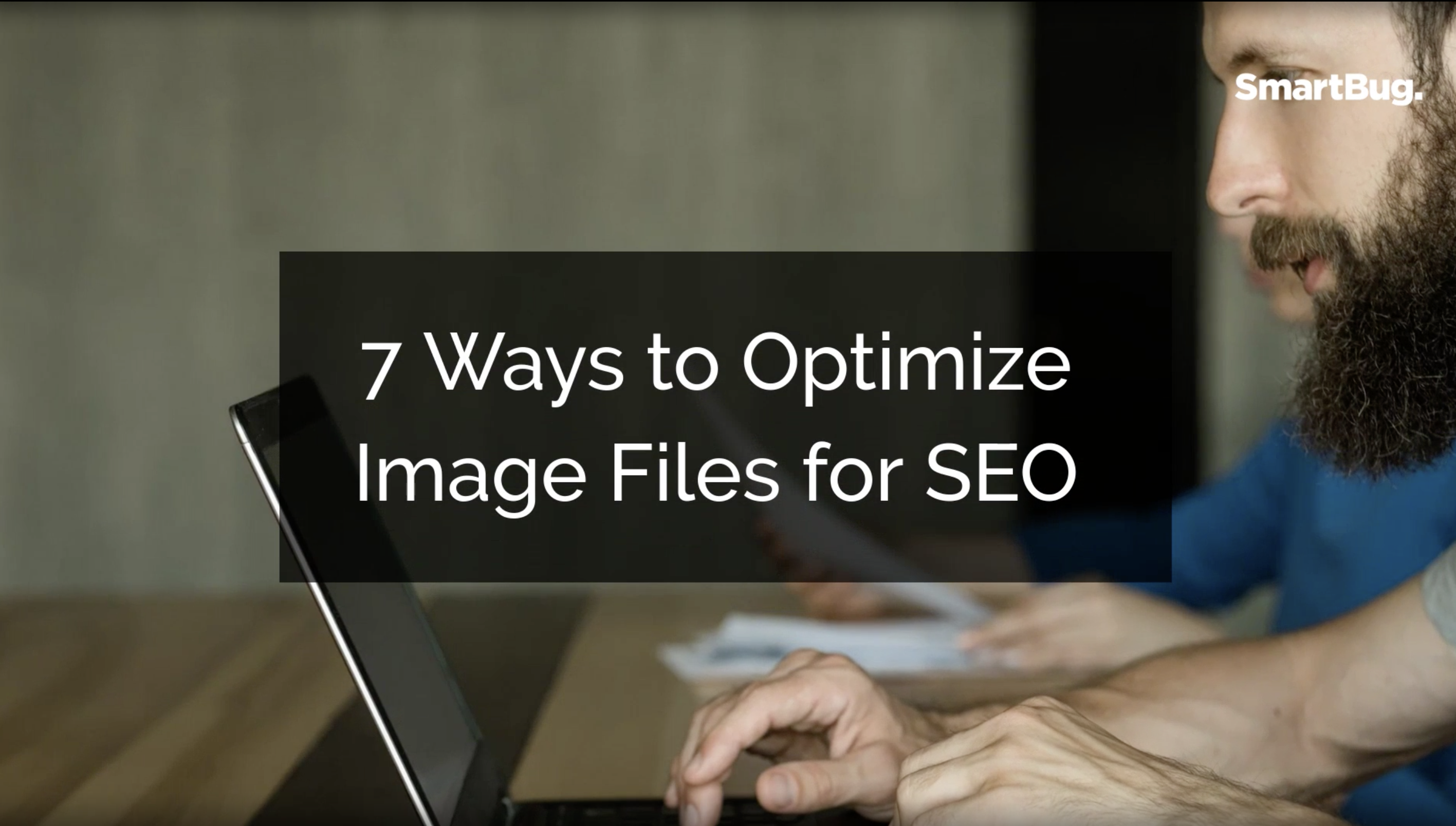
7 Ways to Optimize Image Files for SEO
December 19, 2019
By Natalie Boyd
Have you ever been puzzled over what image file types you should be using or if you really need to add file names and alt text to every image on your website for SEO’s sake?
Don’t let these nitty-gritty details intimidate you from achieving the next level for your on-page SEO or showing up in image-based search engines like Google Images.
Let's breakdown the basics on how you can optimize image files to be more SEO-friendly.

1. Use clear and descriptive file names.
Aim to make your image file names easy for Google to comprehend.
For instance, imagine you’re Google and you come across an image titled: Image01.jpeg. Would you know what that image stands for? It would be much better to name an image file more along the lines of Optimize-Images-SEO-2014.jpeg, especially if the content on the page is also about optimizing images for SEO.
Essentially, the more clues that Google can use to figure out what a site is about, the better, but be careful not to be spammy by writing excessively long file names or keyword stuffing.
2. Use keyword-rich alt text.
Alt text simply refers to a text alternative for images when a web browser can’t properly render them.
How many times have you opened up an email on your desktop or mobile device and the image(s) didn’t load? Did you still decide to click on the image or call-to-action to visit the landing page?
As marketers, we want to take advantage of writing a descriptive, keyword-rich alt text to increase the likelihood of click-through-rates even if our images can’t render properly for our users.
Additionally, if you decide to use an image as a link, make sure to include alt text that is relevant to the link’s destination to improve the user experience.
3. Context is key.
Wherever possible, make sure that images are placed near the relevant text because you don’t want to confuse search engines.
Search engines assess what page the image is on and the content around the image to dissect important information about the subject matter of your image.
Basically, don’t feature an image about a cooking recipe if your content is about setting business goals. (A little farfetched example but you get the idea).
4. Monitor page load times.
Use the “Site Speed” tool in Google Analytics to your advantage. By monitoring page load times, you can compare how each page is performing in comparison to the site average. (A general rule of thumb for page load time is between under 3 seconds.) This may help you uncover that you’re using too many or too large images.
Remember, it’s all about the user experience and search engines recognize this important element in their ranking algorithm as well. If necessary, you can reduce the number of files that need to load on the page by combining images and code files, as well as removing any unnecessary images.
5. Reduce the file sizes of your images.
Here’s are a few simple ways to reduce the files sizes of your images:
- Crop your images to the correct size of your page width. (If your page is 970 px wide, resize the image to that width.)
- Show a smaller image and provide the option to view a larger image in a pop-up or to be displayed on a separate webpage.
- Reduce the color depth to the lowest acceptable level.
6. Use commonly supported file types.
It’s widely recommended to use JPEG as a first choice, and PNG as a second choice. It's also a good idea to have the extension of your filename match with the file type.
(We have an entire blog posts dedicated to file formats and when to use them.)
7. Supply an image sitemap file.
Consider consolidating your images into a single directory rather than having image files spread out in numerous directories and subdirectories across your domain. An image sitemap file title such as smartbugblogposts/images/ would simplify the path to images for search engines. Furthermore, this helps webmasters stay organized behind the scenes.
Final Thoughts
Now that we have covered the basics of how you can optimize image files for SEO, it’s important to remember that the user experience should always come first.
Great image content is an excellent way to build traffic to your site, however, users need to be able to find it first! Following the best practices listed above will increase the likelihood that your images will be returned in those relevant search results.

About the author
Natalie Boyd was formerly a Marketing Specialist at SmartBug Media with 10 years of experience supporting in-house, freelance, and agency clients. She is passionate about using inbound marketing to help businesses succeed and make meaningful connections with their target audience. Read more articles by Natalie Boyd.






